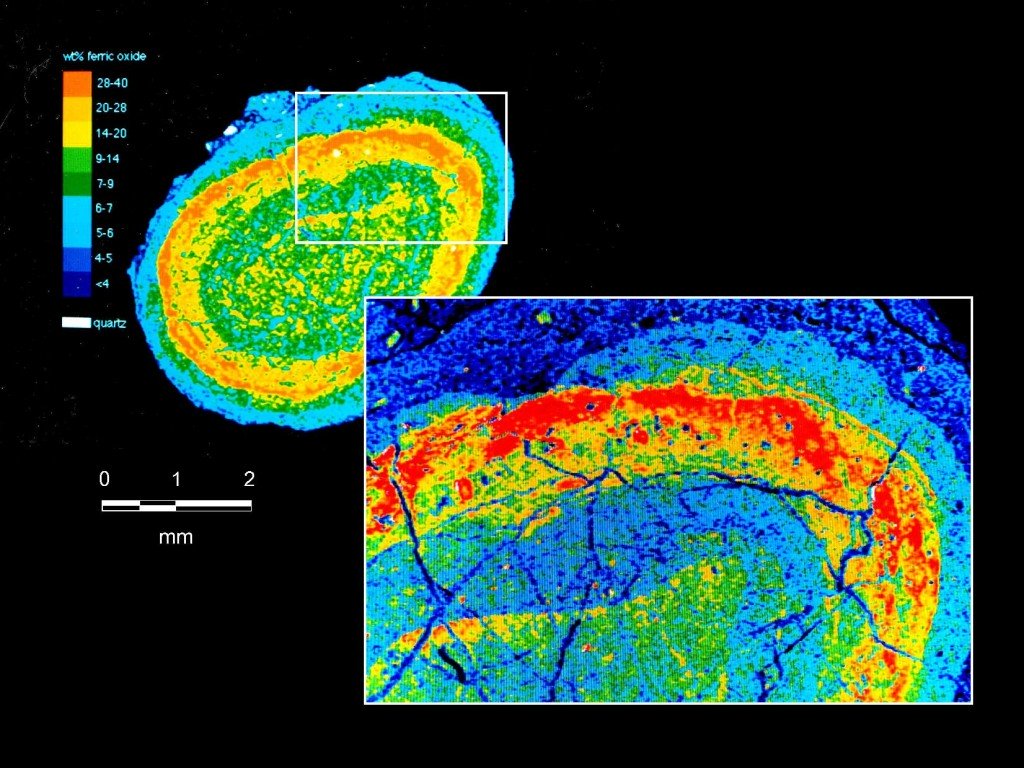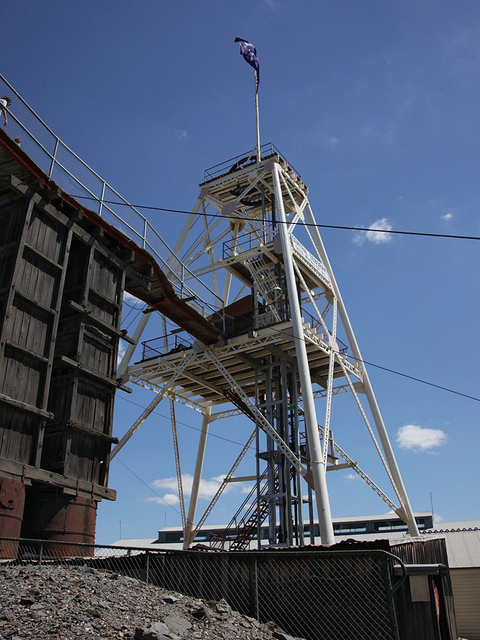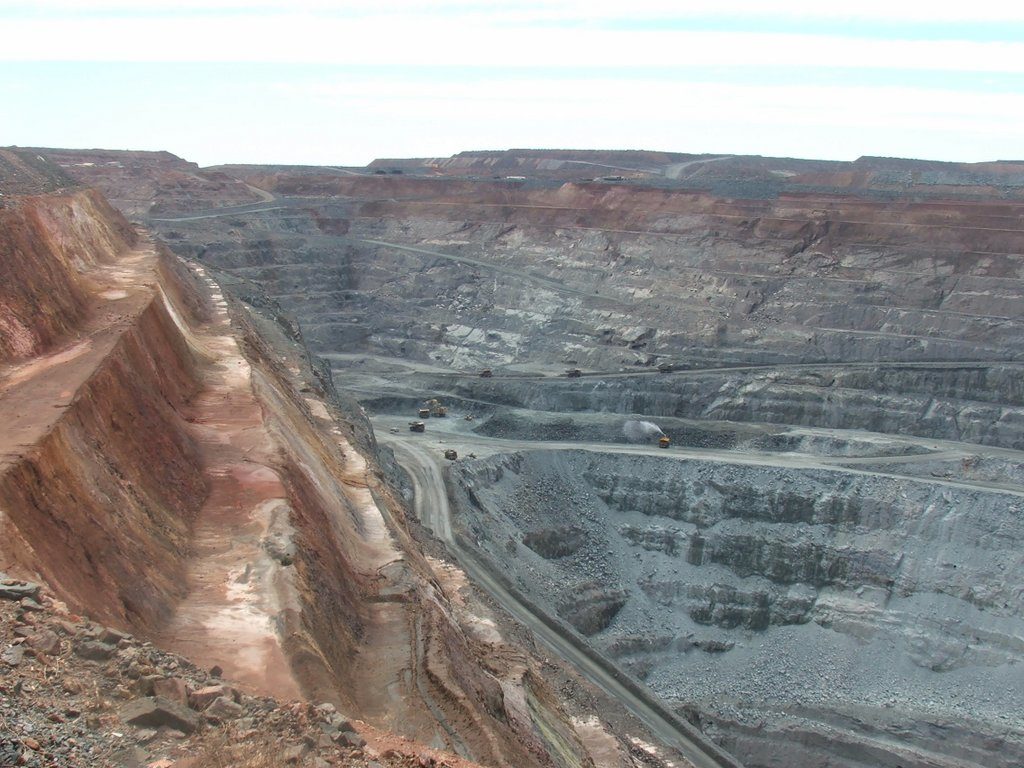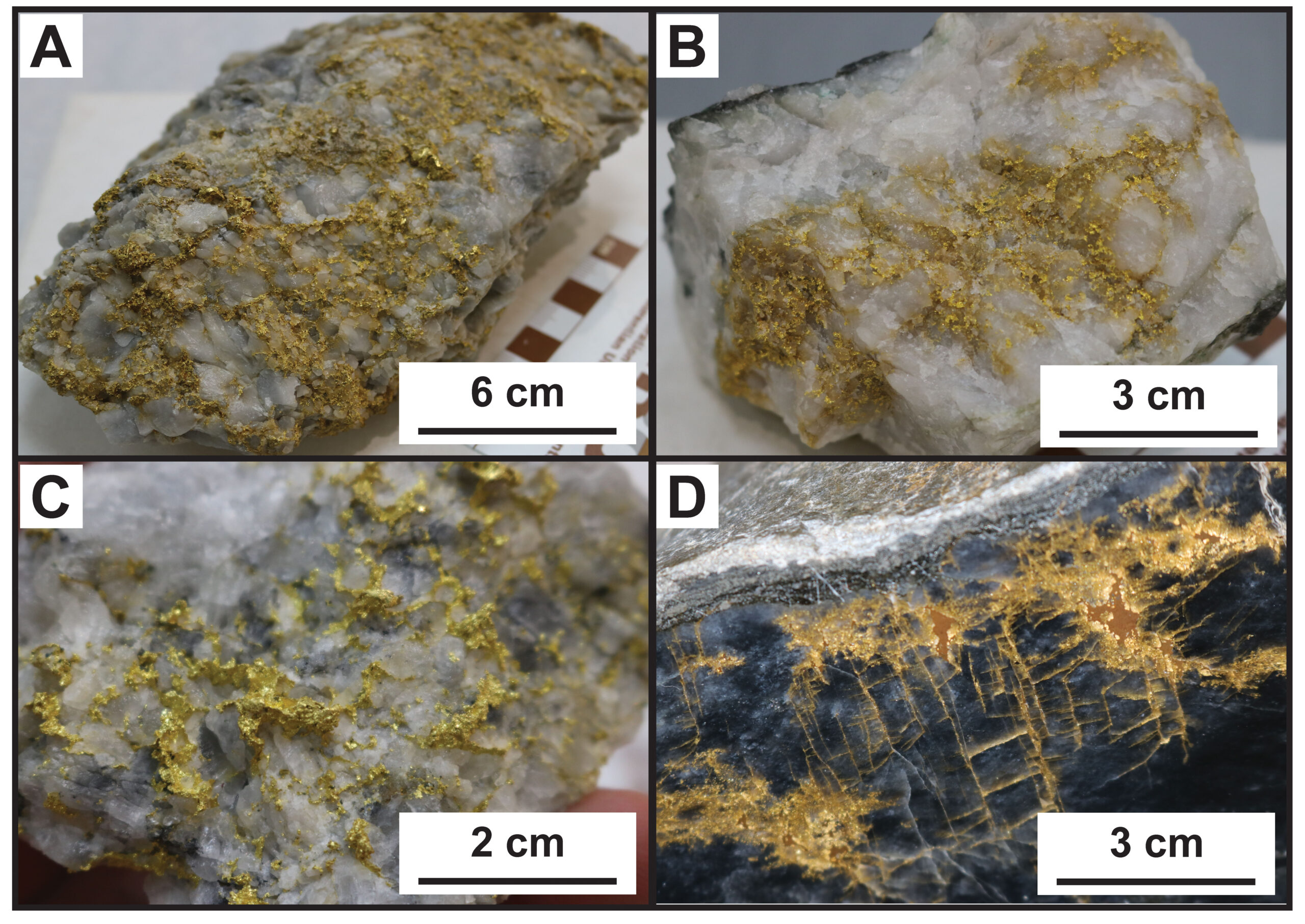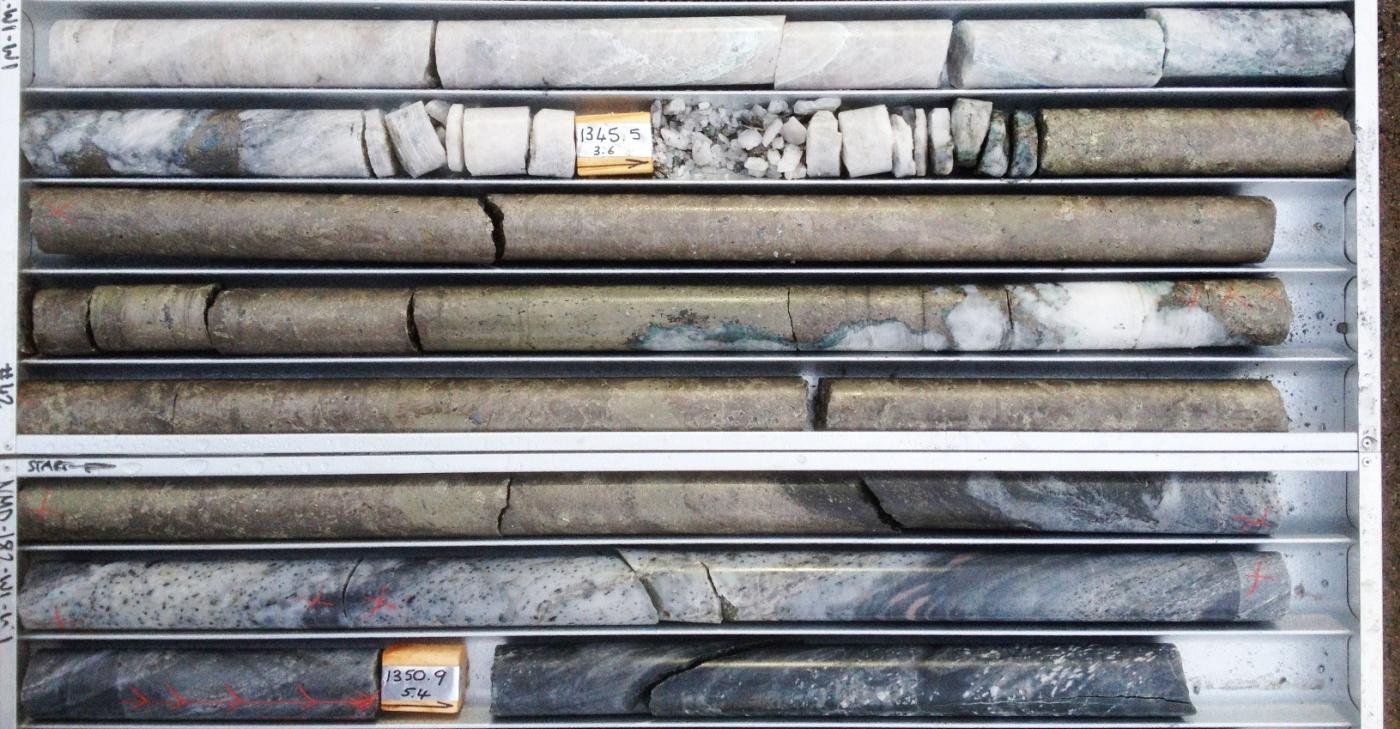The Kafubu Mining Area is one of the largest suppliers of gem-quality emeralds in the world, second to Colombia. Located in central Zambia on both sides of the Kafubu River, this area is home to the Kagem Emerald mine, which accounts for 25% of the world’s emerald production. The Kafubu emerald deposits are within the mineral-rich Zambian Copperbelt Province and are distributed over 200 km2. Measured, Indicated, and Inferred Mineral Resource of the Kagem mine is 1.8 billion carats of emerald and beryl at an in-situ grade of 281ct/t. During 2019, the mine produced 36.3 million carats of emerald and beryl, including 204,600 carats of premium emerald.
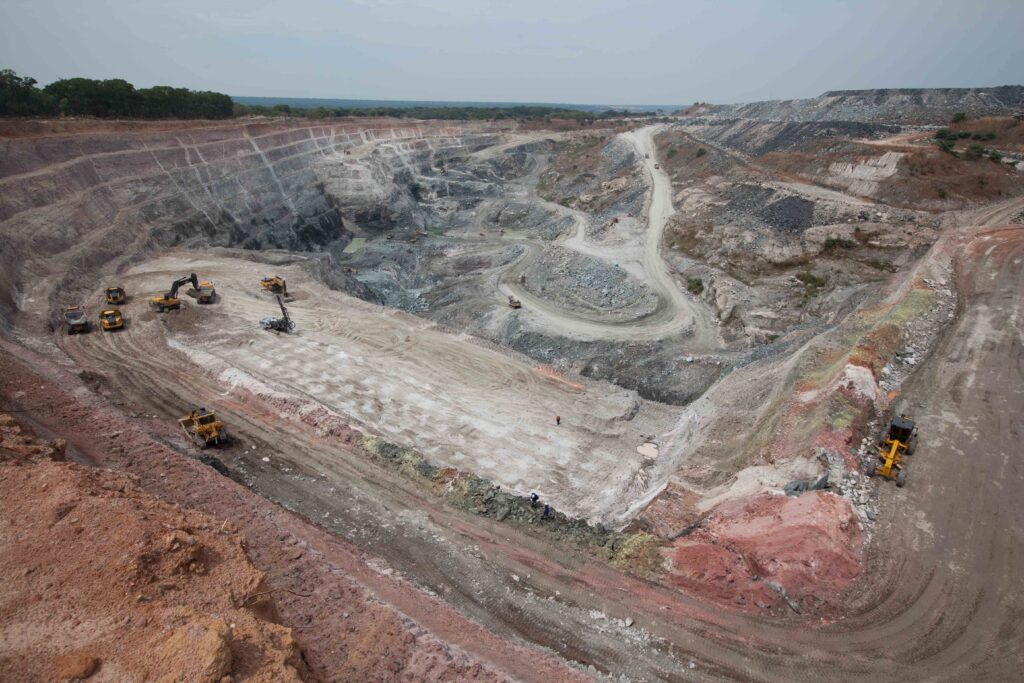
The article describes the origins of the Zambian emerald, a growing competitor to the long-prized Colombian emerald.
History of Mining in the Kafubu Mining Area
The first discovery of beryl mineralization in this area dates back to 1928. Emerald production did not occur until the 1970s, when local miners discovered additional deposits. The Zambian government controlled the exploration and production of the major deposits until the 2000s, when an Indian-Israeli company was allowed to begin their own exploration and mining activities in the Kafubu area.
A variety of exploration methods have been used to develop this area, focusing mainly on areas adjacent to known deposits. Experienced local miners use surface level methods, such as “gut feel” and field observations of soil, although the thick layer of residual soil complicates exploration. Advanced exploration techniques include geological mapping, core drilling, magnetic survey, and radiometry. There was no qualitative geological modelling until 2004, when the UK-based Gemfields Resources PLC began systematic exploration of the area. Gemfields carried out a full set of geological surveys, drilling, ore body modelling, and bulk-sampling.To date, they have drilled 94,000 m of core in 913 boreholes, and are using geochemical analysis and geophysical surveys to continue exploring for additional emerald deposits.
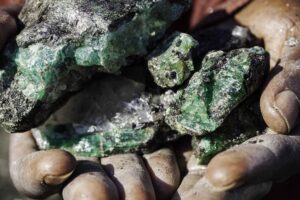
Geological Setting
The Kafubu emerald mineralization is a typical example of a schist-hosted emerald deposit (like those in Brazil, Madagascar, Russia, and South Africa) as opposed to sedimentary-hosted emerald deposits in Colombia. Emerald is a green variety of beryl (Be3Al2(SiO3)6), a mineral commonly found in granitic pegmatites. Beryl naturally occurs in many different colors (green, blue, yellow, and red) caused by chemical impurities. Care should be taken to distinguish green beryl from emerald. The key difference between the two is the presence of Chromium (Cr). According to some gemologists, only Cr-containing and Cr+Vanadium-containing green beryl can be called an emerald. This means that the presence of Cr in the source is a requirement for emerald formation.
The Kagem emerald mineralization occurred as a result of the interaction between Cr-bearing metabasites (a metamorphosed mafic or ultramafic rock) and Beryllium (Be)-bearing pegmatites and their accompanying hydrothermal fluids. The combination of these events, which occurred during the late stages of the Pan African orogeny (~450 million years ago) created the conditions for emerald mineralization. The best gem-quality emeralds are usually found within phlogopite (a mica mineral similar to biotite) reaction zones, which can be up to 5 m thick. In the Kafubu area, phlogopite zones are found at the contacts between (a) quartz-tourmaline veins and metabasite and (b) Be-rich quartz-feldspar pegmatite intrusions and metabasite.

Mineralogy and Gemology of Emeralds
Kafubu emeralds typically occur as fragments or clusters of individual crystals, and occasionally as well-formed hexagonal crystals. These crystals range in size from less than 1 mm to several cm. The color of an emerald varies from light green through bluish pale green to bluish dark green, depending on Cr content. Some emeralds are zoned, with a light green core grading to intense green rim.
Zambian emeralds have a blueish hue in contrast to Colombian emeralds, which have a purer green color. The distinguishing feature of Zambian emerald is an increased amount of Iron (Fe), the chromophore (an element or elemental compound that is responsible for a mineral’s color) that gives an emerald a blueish tint.
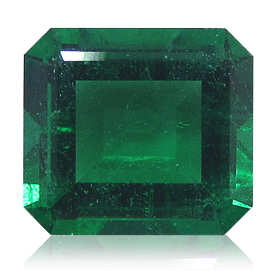
Another important feature of Kafubu emeralds is the presence of tiny solid mineral inclusions, usually actinolite-tremolite, glauconite, talc, apatite, quartz, chrysoberyl, margarite, muscovite, and niobium-rich rutile. Zambian emeralds have a relatively high refractive index ( no = 1.591–1.595 and ne = 1.583–1.587) and specific gravity (from 2.71 to 2.78).
These unique qualities of Zambian minerals, including the amount of particular chemical elements, type of mineral inclusions, and optical and physical properties that are slightly different from widely used values, can act as fingerprints in a biometric passport to determine a gemstone’s place of origin.
Conclusions
In 2016, Gemfields joined Swiss luxury jeweler Chopard’s Journey to Sustainable Luxury. The goal of this cooperation is making the path of stones from the mine to the consumer as transparent and ethical as possible. Gemfields strives to minimize environmental impact from their mines, and invests in the health, education, and livelihood of the communities in which they operate.
In 2018, an incredible emerald was discovered by two miners at Kagem: a unique 1.1 kg (5,655-carat) gem-quality emerald. The stone was given the name “Inkalamu”, which means “lion” in the local Bemba language.
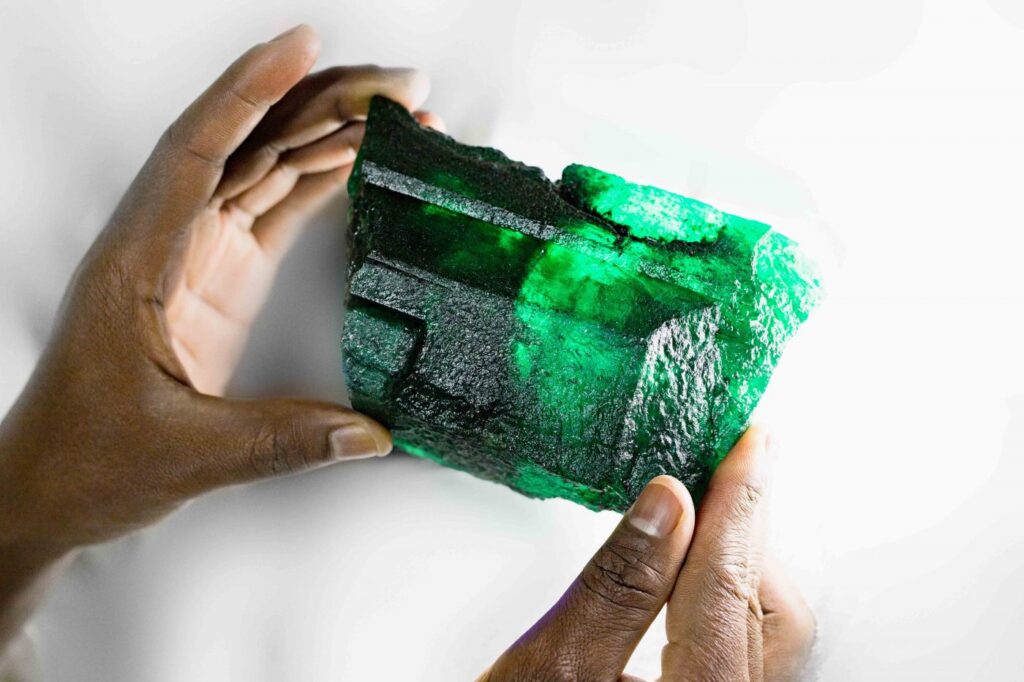
The magnificent stone was sold for an undisclosed price to the Indian jewelry company Diacolor. Gemfields pledged to donate 10% of the sale proceeds to two of its philanthropic wildlife conservation partners.
Since 2008, Gemfields has owned 75% of the Kagem mine and the remaining 25% is owned by the Zambian government. Today the Kagem open-pit emerald mine reaches 130 meters in depth. Gemfields estimates a life of mine of 20 years (up to 2040) and is continuously exploring for additional resources. Exploration techniques include airborne/ground geophysical surveys, diamond core drilling, geochemical analysis, and 3D geological modeling.

